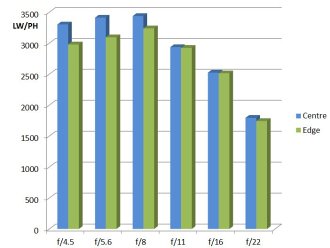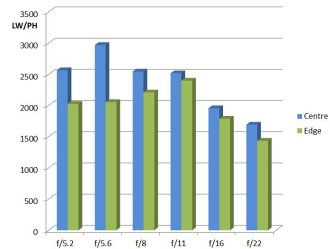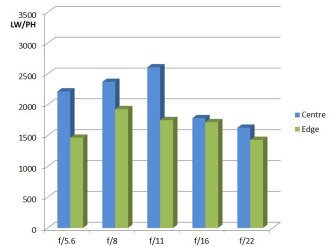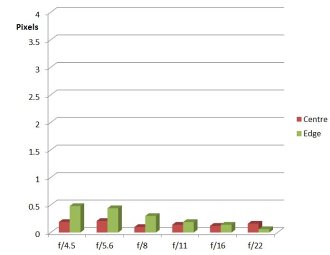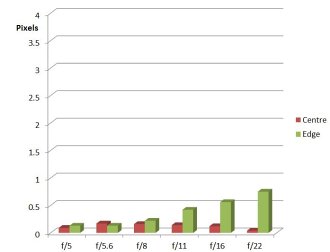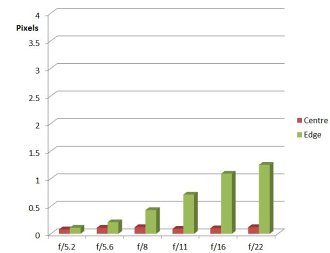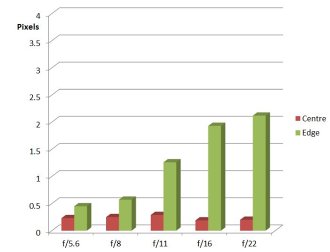Fujifilm XF 100-400mm f/4.5-5.6 R OIS WR Review
Fujifilm XF 100-400mm f/4.5-5.6 R LM OIS WR Performance
The resolution tests reveal that sharpness overall is rather impressive. Images have punch and the fine detail is there if we examine images more closely. There is also a very pleasing pictorial quality to the images, something that is more elusive to define but we know it when we see it.
At 100mm, from f/4.5 through to f/8 the sharpness is excellent, bordering on outstanding. Excellent sharpness is maintained at f/11 and f/16 and remaining very good at f/22. The edges are excellent from f/4.5 right through to f/16, peaking at f/8, which is also the best overall aperture. Sharpness is still very good at f/22.
At 200mm, central sharpness is excellent from f/5 to f/11, peaking at f/8 where it approaches outstanding. F/16 yields very good sharpness, remaining good even at f/22. The edges are slightly behind the central performance, being very good at f/5 and f/5.6, excellent at f/8 and f/11 and then tailing off to very good at f/16 and still good at f/22.
At 300mm, central sharpness is very good from f/5.2 to f/11, peaking at f/5.6 where it is excellent. The edges are very good from f/5.2 to f/11. Centrally results remain good at f/16 and f/22, the edges are good at f/16 but only fair at f/22.
At 400mm, sharpness is lower but still very good centrally at f/5.6 and f/8. It is excellent at f/11, falling to good levels at f/16 and f/22. The edges lag a bit, being only fair at f/5.6, good from f/8 to f/16 and fair at f/22. This is not unexpected as the longer focal lengths in zoom lenses are usually the weakest. However, often these lengths are used for solitary subjects against out of focus backgrounds, and in this context the lens will still produce bright, sharp images.
How to read our charts
The blue column represents readings from the centre of the picture frame at the various apertures and the green is from the edges.The scale on the left side is an indication of actual image resolution as LW/PH and is described in detail above. The taller the column, the better the lens performance.
For this review, the lens was tested on a Fujifilm X-Pro2 using Imatest.
CA (Chromatic Aberration) is also virtually eliminated. It is only at the smallest apertures and longer focal lengths that any edge CA becomes an issue, and it is arguable that few people will be shooting with a 400mm lens at f/22. In normal photography, CA may be regarded as almost zero, especially at the centre of the field.
How to read our charts
Chromatic aberration is the lens' inability to focus on the sensor or film all colours of visible light at the same point. Severe chromatic aberration gives a noticeable fringing or a halo effect around sharp edges within the picture. It can be cured in software.Apochromatic lenses have special lens elements (aspheric, extra-low dispersion etc) to minimize the problem, hence they usually cost more.
For this review, the lens was tested on a Fujifilm X-Pro2 using Imatest.
Bokeh is smooth as silk, and this is little surprise with a long lens having nine diaphragm blades giving an almost circular aperture.
The OIS (Optical Image Stabilisation) works beautifully. There is no doubt that five stops advantage is achievable and it is this sort of technology that makes an ultra-telephoto zoom viable in hand held situations. Obviously moving subjects still need high shutter speeds to arrest movement, but the advantages of OIS are very clear. Advice is to switch the OIS off if using a tripod, and this may be generally true, but the lens is long enough to make even tripod mounted shots prone to vibration. The 10 second timer can be used to good effect, but it can clearly be seen that almost the full 10 seconds is needed for the camera/lens combination to stabilise.
Distortion is insignificant, measuring as a small amount of barrelling. This is -0.0462% at 100mm, -0.0411% at 200mm, -0.0341% at 300mm and -0.007% at 400mm.
With such an impressively huge lens hood, I did not expect to see much flare, and there is none in evidence. Shooting into the light does not even lower contrast significantly, so this is a very strong performance.
Value For Money
The Fujinon XF 100-400mm f/4.5-5.6 R LM OIS WR lens is priced at £1499, always a large amount of money, but unique in the Fuji XF range and basically the only option that does the job if we want to shoot birds, wildlife, sports, etc. This makes VFM a moot point in some ways, but we can look at what other marques offer their users to see how values compare.
Pentax users have the HD Pentax-D FA 150-450mm (£1699), Nikon offers the AF-S Nikkor 200-500mm f/5.6 E ED VR (£1179), Canon the EF 100-400mm f/4.5-5.6L IS II USM (£1849) and Panasonic the DG Vario-Elmar 100-400mm f/4-6.3 Aspherical (£1349). The Fujinon lens falls within this range of prices and seems to be priced at a competitive level.
Add your message
Please login here or if you've not registered, you can register here. Registering is safe, quick and free.
photodo Stats
428 MTF tests
74 in-depth photodo reviews
100+ users join each day
Help the lens community by reviewing or rating a lens today via our lens search
Latest Lens Reviews
- Chinon 28mm f/2.8 Vintage Lens Review
- Canon EF 70-200mm f/4L IS II USM Lens Review
- Samyang AF 85mm f/1.4 EF Review
- Sigma 70mm f/2.8 DG Macro Art Review
- Samyang AF 24mm f/2.8 FE Review
- Meike 50mm f/1.7 Review
- Tamron 70-210mm f/4 Di VC USD Review
- Lensbaby Burnside 35mm f/2.8 Review
- Asahi Super Takumar 50mm f/1.4 Review
- Asahi Super-Multi-Coated Takumar 135mm f/3.5 Review
